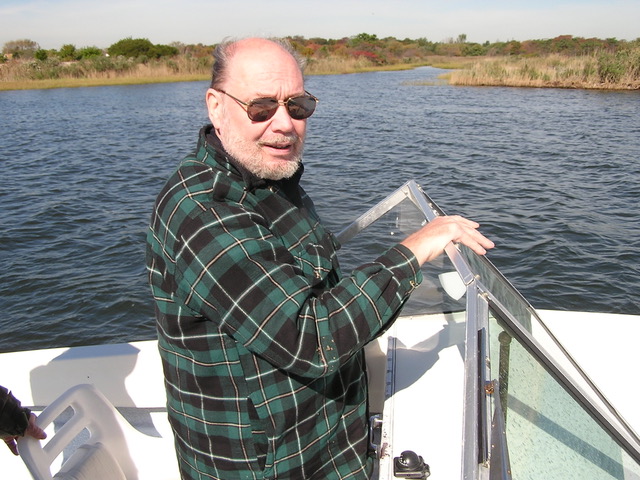OLD MASTIC AND BELLPORT
THE KNAPPS LIVED HERE
When Ken Spooner began his website, Spoonercentral.com, in 2000, it was among the very first websites in the early years of the internet. Spooner, a native of Mastic Beach, New York, is a songwriter and musician by trade, and the author of two books: Long Ride on a Short Track (1998) and The Knapps Lived Here (2010).
Ken’s childhood home in Mastic Beach was on the grounds of the former Joseph P. Knapp estate, where he played in its remnants. As an adult he was still curious not only about the estate’s history, but also that of all of Mastic Beach and environs, a historically unsung area except for generalizations about the four Revolutionary War-era families who had lived there. For the first ten years, Spooner’s website was a proverbial index card catalog for the book he was to write – The Knapps Lived Here.


Review of Ken Spooner’s book: The Knapps Lived Here
By Marty Van Lith (August 25, 2010)

As the president of Friends of Wertheim National Wildlife Refuge in 2000, I gave a presentation at the Mastic-Moriches-Shirley Library about the history of the Refuge and the Carmans River, which runs through it. The audience was clearly more interested in the history of the entire area, and afterward the librarian invited me back to do a broader history of the Mastic Peninsula, which I did in 2002.
By the early years of this century, the Internet had become a useful research tool. As I began the research for my next talk, lo and behold, I found Ken Spooner’s website, which was in its early stage. Most curious was that Spooner claimed to have been in my William Floyd High School class of 1964. I didn’t remember anyone by that name and, after contacting him via the website, found out that he was my former classmate Kenny Joseph, who had adopted his mother’s maiden name, Spooner.
Thousands of e-mails and dozens of hours of shared research followed, all of it exciting and great fun. After 2002, Ken Spooner was clearly the most knowledgeable historian of the Mastic Peninsula, a historically unsung area except for generalizations about the four Revolutionary War-era families who had lived there. Ken pursued his research with the fervor of a graduate student working to complete his/her dissertation on time, despite the fact there was no time limit.
Pursuing every lead and every clue he found, Ken made several visits to Long Island, including to a 40th reunion party for the William Floyd HS Class of 1964. By 2005, he had acquired more than 5,000 documents and photographs and was at a decision point as to which book to write first – the story of his personal quest to discover who the Knapps were or a history of the Mastic Peninsula (working title: From Blueblood to Blue Collar).
To those of us who know Ken there was never any question as to which he would choose, and, by 2008, Ken had circulated a draft of the 39 chapters for us to review.
It’s been a long and winding road culminating in this fascinating history of the Joseph Knapp family. Their story is remarkable in its own right and especially for those of us who grew up in the shadow of their mansion without ever knowing that people of such stature and wealth had also called our working-class area “home.”
As a fellow historian, I also recognize that Ken has made an invaluable contribution to the body of existing knowledge about the Mastics and Shirley by writing the first well-researched, comprehensive and reliable look into the history of the Mastics. Congratulations, Ken, on an amazing achievement.